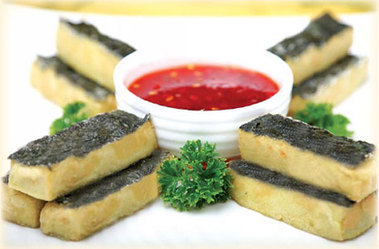
The newly opened Confucius Restaurant bears the stamp of the venerated scholar everywhere.
The stone dragon columns at its gate resemble those in front of the Dacheng (ultimate achievement) Palace at the Confucius Temple. An imitation Apricot Altar (a platform where Confucius gave lectures to his students) stands at the center of the first floor of the restaurant. One can also find library cabinets with bamboo slip books, serial bells that can play accurate musical tones, and qiqi,slanting water pots.
There are at least 30 replicas of things found in the Confucius Temple and Residence in Qufu of Shandong. The private rooms on the third floor are all named after Confucian teachings or works familiar to the Chinese. The relief stone paintings on the walls details the scholar's life and work.
Most of the dishes too, have names taken from Confucius works. A beautiful semi-transparent spinach and pork jelly is named he'erbutong (peaceful together with difference), a Confucian idea. A delicious fish soup with gristle fishbone is named braised Emperor Qinshihuang fishbones. It is said to be a classic Confucius family dish to vent anger on Qinshihuang (259-210BC), the 1st emperor of China, who burned Confucius?books and buried scholars alive, to the great dismay of the descendants of Confucius (551-479BC).